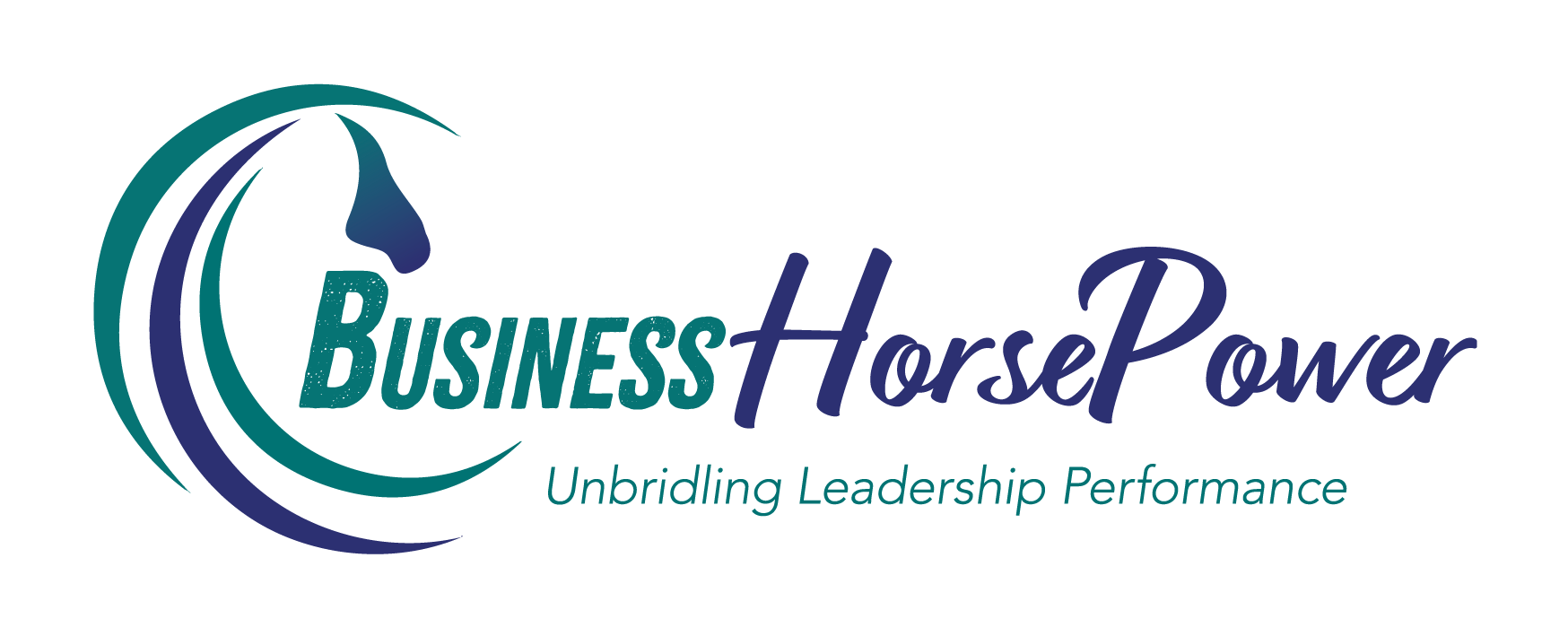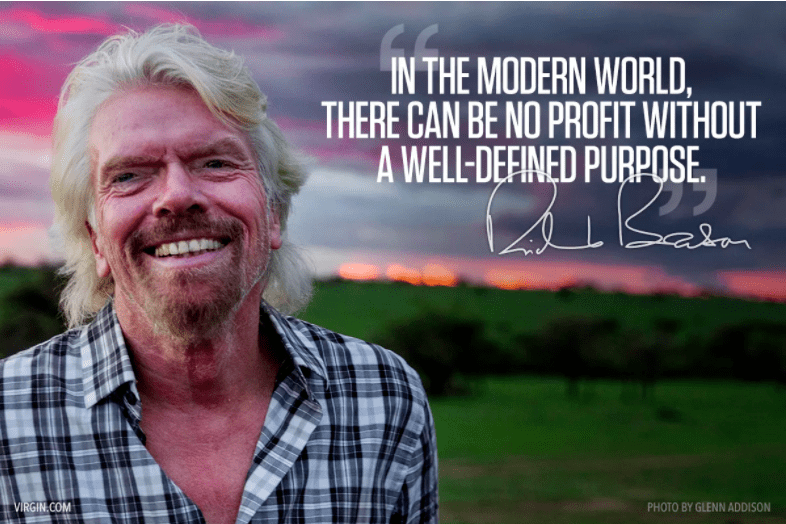
by Julia Felton | Oct 26, 2017
Purpose has moved to the centre stage in business. It is the glue that keeps organisations aligned and in flow. It connects business owners and leaders with team members and ultimately their customers. It enables business growth as everyone knows what the business stands for and where it is heading. Team members and customers are attracted to businesses that are seeking to be change makers and make a real difference in the world, and so engagement levels increase. That’s the power of an Engaged Purpose.
Let’s be clear purpose is something more profound that corporate social responsibility (CSR). Purpose provides a road map and the opportunity to think much bigger about the impact you and your business are making in the world. It is about so much more than recycling, finding ethical suppliers or recognising the negative effect your business is having on the environment.
So what is an Engaged Purpose?
It is a written statement that clearly communicates to your team what your company does and why. It details the transformation you are trying to create. It provides a structure and framework that will inspire your team to align their daily activities with your company’s larger aspirations.
Purpose is often confused with vision and mission, but they are not the same. Visions, which can be defined as preparation for the future often tend to be factual and so don’t appeal to people’s emotions. Whilst missions tend to describe any work that we believe it is our duty to do. Many visions and missions are too broad in scope and so fail to resonate with team members.
A great purpose always answers the question Why. Why are we doing this? This question gets team members, customers and all the other business stakeholders to become engaged in the business. It motives them to find the answer to How the business achieves this solution. A compelling purpose touches the heart rather than the mind. It provides the road map where all stakeholders feel that they are making a contribution to the organisation’s success, and so fulfils Maslow’s third hierarchy of needs which is comradery and positive relationships
Common Mistakes To Avoid When Crafting Your Purpose
Mistake # 1. Written for the wrong audience.
Many purpose, mission or vision statements are written for the organisation’s customers. This is wrong. Most customers don’t care – they choose to deal with you for reasons other than some words about why you exist and what you do. The people who matter here are your team. Write your Purpose for them, to engage them, and Engaged Customers will become a by-product. (But do write it knowing that customers may read it, too.)
Mistake # 2. Disconnected from the team and confused with vision or mission.
Purpose should not be confused with vision – which can be defined as “preparation for the future,” or mission – which might be described as “any work we believe it is our duty to do.” Certainly both have value, as they are all crucial to your business’ growth and success. =In our experience, however, visions and missions often don’t fully resonate with the teams that are tasked with achieving them (see Mistake #1).
“Purpose-driven organisations are believed to have better results across a variety of measures, with 89% of participants saying they encourage greater employee satisfaction, 85% better customer advocacy and 81% higher quality products and services.” – EY (formerly Ernst and Young)
Why an Engaged Purpose is Important?
In a study of employees at various companies, EY found that a staggering 87% of respondents believe companies perform better over time when they have a purpose that goes beyond profit. Additionally, EY found a great purpose resulted in:
• 85% BETTER CUSTOMER ADVOCACY
• 89% GREATER EMPLOYEE SATISFACTION (great news, if you’re looking to reduce staff turnover)
• 81%HIGHER QUALITY AND SERVICES
There was another standout figure: only 37% of respondents said their company’s business model and operations were well aligned with its purpose. Imagine what would be possible if more team members became aligned and engaged with the business purpose? Increased productivity, profitability, happier employees, more innovation and creativity and just some of the results.
If you’d like to learn more about The Power of Purpose To Ignite Extra-Ordinary Performance join me for a free workshop being held as part of York Business Week.

by Julia Felton | Sep 26, 2017
Are busy teams really productive? This is something I often reflect on for both myself and my clients. I know that in the past I have confused busyness with being productive but increasingly I have come to realise that they are not the same things.
As Socrates, the ancient Greek philosopher notes “Beware the barrenness of a busy life.” A team or individual can be really busy but not productive, and so not achieve the results they were hoping for. Just think about it. You can spend all morning on social media and clocked up hours in the office but have you really been productive and moved your business towards its goals.
Here are 5 ways to decide if you are being busy or productive:
1. How measurable are your goals? Everything you do should be aimed toward accomplishing something profitable. Clarify your goals with your team if they are confused about the current priorities. If you can’t tell how a team member’s daily activity moves you toward your goal in some way, it’s likely they are busy rather than productive. Always track the results of your efforts to reach your goals with easily readable metrics.
2. What tasks can you remove? Examine every task your team undertakes. Is it really necessary? If not, is it still productive or profitable? If it fails that test, it’s subject to elimination or severe streamlining. For a number of years, I created a monthly newsletter full of great content but I never bothered to ask you if you found it valuable. Once I did I changed tact and now deliver you Wednesday Wisdom which is shorter and more concise.
3. How’s your Return on Investment? Does your team’s output consistently earn the organisation more than it pays all of you? If not, start honing your Personal ROI (PROI). Outsource tasks that people outside your team can do more effectively and less expensively, stop doing tasks below your pay-grades, and as a leader, don’t micromanage. Always look for a more productive or profitable alternative to every task. For example, I’m not an expert at building marketing funnels I could spend time figuring it out, but it’s not worth my time, versus a trained expert who can build in quickly and effectively.
4. Check your meeting meter. As you rise in leadership, you’ll be spending more time in meetings, because they represent your “work,” where decisions are being made. But they can definitely steal your time if you’re not careful. If a meeting doesn’t come with a purpose, an agenda, and decisions to be made, skip it. Leave at the promised end time. Encourage others to be brief and to the point with their concerns and comments.
5. Is your social media helping or hurting? Maybe social media represents the wave of the future, but it can be a huge timewaster. Is it even something that your team directly profits from using? Is it necessary for doing your job, such as marketing, PR, or HR? If not, skip it at work. Not everyone needs to be using Facebook pages and Twitter at work. Appoint someone to deal with it using the latest tools to maximise time use, or outsource it if you can do so less expensively.
6. Are you proactive or reactive? Do you and your team leap into action only when prodded, or do you review your strategy on a regular advance basis, so you constantly greet change with enthusiasm?
RESULTS RULE.
At the end of the day it all boils down to this: productive teams produce results. Busy teams produce more busywork. Unless you work for an organisation where results aren’t always immediately apparent, like an international charity, it shouldn’t take you more than five minutes to determine whether or not you and your team are productive.
Finally, as John Wooden, an American college basketball coach notes. “Don’t confuse activity with achievement.”
–
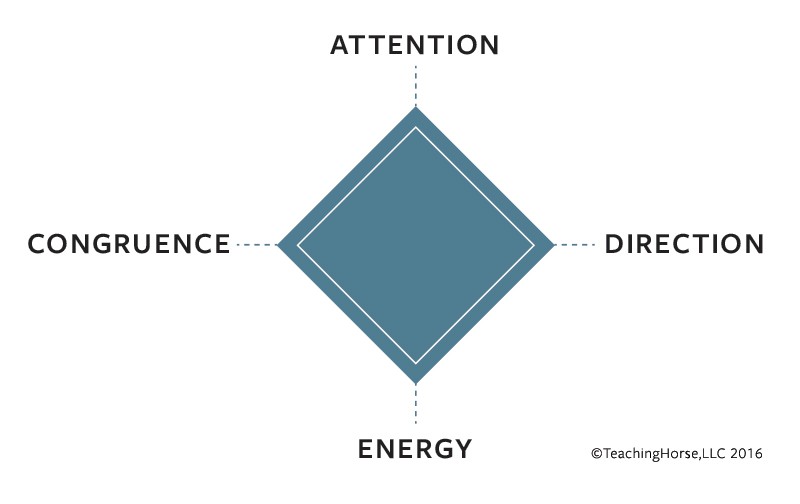
by Julia Felton | Sep 11, 2017
No-one I speak to disputes the fact that we live in a VUCA world full of volatility, uncertainty, complexity and ambiguity. We are living in a world where change is ever greater, where the future is less predictable, where the options increase exponentially, and the way we think about these options has undoubtedly changed.
Today, leaders are inundated with huge amounts of information and need to make decisions faster than ever. However, there is no way that just one person can manage that volume of data. Increasingly organisations are realizing the power of shared leadership and collective teams to help them navigate this volatile marketplace.
Whilst many might think that the concept of Shared Leadership is a new phenomenon, the fact is that in nature animals have been applying the principles of shared leadership for literally millions of years.
Take a herd of horses for example. They have existed on this planet for over 45 million years, compared to the 6 million years that humans have inhabited the earth. They have learnt to be agile and adapt to their changing environments through sharing leadership and can teach us some key leadership skills to help us survive in these challenging times.
In a herd of horses, leadership is shared.
The lead mare sets the direction and pace of the herd. The lead stallion keeps the herd together and protects it from predators. Each member of the herd has a role in protecting the health of the herd. All of the horses in the herd contribute to the socialisation of new or young members, teaching them what behaviours are acceptable and correcting those who could behave in ways that could compromise the health of the herd. The overwhelming goal of the herd leadership is to create unity, harmony and collaboration whilst keeping the herd safe.
Safety is a key consideration for herd members because horses are prey animals, so they live under threat of attack every day. The herd leaders need to create and maintain what Simon Sinek refers to as a Circle of Safety. They need to foster an environment free of danger and give the herd members a sense of belonging, the power to make decisions and offering trust and empathy. And guess what that is what we need to do as leaders in the workplace too.
The Diamond Model of Leadership
Based on the principles of the herd the Diamond Model of Leadership, developed by June Gunter of Teaching Horse, aptly reveals that for horses to place their trust in their leaders, they must know four things about them. The same four things that our team members want to know about us.
- Attention – when leaders are paying attention they can detect even the most subtle shifts In the environment
- Direction – leaders give clear direction of how to respond to these shifts
- Energy – through assessing the situation leaders decide on the energy and pace required to respond to the situation
- Congruence – leaders display congruence of their inner and outer expressions and are aligned in your actions. Ultimately the herd members must know that the leaders have their best interests at heart, at all times, and are not acting in a self-serving manner.
Attention, Direction, Energy, Congruence: When leaders demonstrate these characteristics and skills the herd become confident in their leadership. And the bottom line is that confidence in the leader makes the herd agile in times of change.

And the same is true for our teams in the workplace. To gain confidence, leaders must demonstrate they are paying attention to what is going on their organisation. They must be present and able to see the entire picture and what is happening. They need to quickly make decisions and give clear direction to the team with focused, inspiring energy that engages the team members to take action. Finally, leaders need to be authentic and have a clear, unambiguous intention that is trusted by the team. Leaders need to act from the perspective of “we” rather than “me”.
When these four attributes are present and aligned in leaders it inspires confidence in their leadership and makes the organisation agile to respond to the changing business environment.
And if you don’t believe me, I challenge you to go and experience Horse Assisted Leadership Transformation (HALT). If you don’t show up and pay attention, have clarity of direction, walk with purpose and be congruent in your actions, you will not be seen as an inspiring, compelling leader who the horse trusts and so he will not walk with you. But guess what, neither will your team members. They might not be so immediate in their feedback as the horse, but over time they will get disillusioned, lose trust and respect for you resulting in decreased productivity and profitability.
Interested and want to learn more, then connect with me and let’s have a powerful conversation. You can reach me at julia@businesshorsepower.com. I look forward to connecting with you.
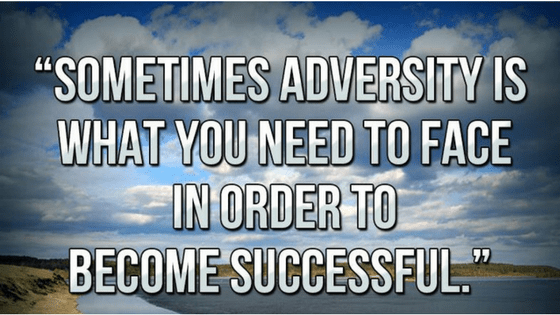
by Julia Felton | Aug 30, 2017
It’s a fact of life that adversity happens but it is the way that we handle it that helps defines who we are and what type of person you are. How do respond when things don’t go to plan? Do you become dominant and aggressive, or do you disconnect from life and hide out?
We’ve all experienced difficult times in our work or home lives, often through events and circumstances outside our control. But like great trees, humans grow stronger when exposed to powerful winds. Here are 10 suggestions for dealing with the hard times when they happen.
1. Take responsibility. Assume an “I can do something” attitude rather than pointing fingers. If nothing else, you can control your own response to the situation.
2. Limit the focus. Don’t let the problem become all encompassing. When you compartmentalize the difficulty, you can focus on a workable solution.
3. Be optimistic. The ultimate belief in life as positive, even with hard-times and troubles, will result in positive behaviours and positive actions.
4. Think creatively. Approach the problem from new and different directions. Trust your creativity.
5. Have courage. Having courage doesn’t mean you’re not afraid. It means that you don’t let the fear get in the way of doing what you need to do.
6. Take action. Handling the day-to-day details can keep you from getting bogged down in the mud of adversity. Determine what can be done, and do it.
7. Take the long-range view. Remember that “this too shall pass.” Recount other times when you have overcome challenges.
8. Maintain a sense of humour. Even in the darkest times, laughter can help ease the pain.
9. Get support. No need to do it alone. Ask for help.
10. Don’t quit. Persistence may be the greatest of human qualities that help us overcome adversity. Consider how water smoothes stones and wind sculpts cliffsides
I really hope these top tips on handling adversity help you, they have helped me no end.

by Julia Felton | Aug 23, 2017
I hope you have been having a great summer. It’s been an interesting time here at Business HorsePower because the weather has tried to play havoc with some of my events. Like two weeks ago when I was running an evening event for 18 local business leaders.
A week before the event someone asked what we would do if it rained. Well I had never even considered that outcome. I’ve always held my events in our main outdoor arena, as quite frankly my small covered, round pen does not have the space to accommodate those numbers. And guess what. Just on cue it rained continuously all day.
Not unsurprisingly I had many calls from the attendees asking if the event was going ahead. To be honest I did consider postponing the event, but then I thought, I need to model what I teach, which is being agile and leading through uncertainty. So with the help of some colleagues I got inventive and created seating and standing space around the round pen for 18 delegates with straw bales and horse rugs.
My horse team stepped up to the mark and delivered some amazing insights to my clients on how to deliver peak performance in what were challenging circumstances.
So this got me thinking and researching the latest scientific research on what really drives performance, and discovered the conditions necessary for teams to perform at their best.
- Find the purpose. People are more motivated when they can see why their work matters. That doesn’t mean every job needs a ‘worthy’ cause; whether it’s contributing to the team’s success or seeing others grow, help them find a reason to be proud.
- Make it difficult. No pain, no gain so the saying goes – while people may think they’ll be happier cruising, research shows that we’re happiest, and perform best, when tasks stretch us to the edge of our capabilities. So set the bar high.
- Pay attention. Knowing that someone will notice – and care – how they’re performing pushes people to improve. Observe your team in action and offer regular, informal feedback on what they’re doing well and how they could get better.
- Recognise growth. Feeling appreciated for who you are and being fairly recognised for great performance makes it worth the effort. That doesn’t mean big financial rewards; a personally motivating token of thanks goes a long way.
- Keep talking. A recent study tracked the financial performance of 40 companies. 63% of high-growth businesses reviewed employee performance more than annually, compared to 22% of those whose growth was low. Regular conversations are key to driving performance.
So are you using these high performance strategies in your business?. Even if you don’t employ team members you can use these strategies to engage your suppliers and customers.

by Julia Felton | Aug 9, 2017
“Proper Planning Prevents Poor Performance”
If you ask many business owners and leaders what creates success many will allude to the fact that planning is key, but this is just one of the 5 P’s of business success. Instinctively, many business owners also understand the concept of alignment but what does this really mean. In my conversations with my clients they usually give one of the following definitions.
- “our core purpose, values and mission are aligned with our goals” or
- “our people understand our values and are aligned with our purpose.”
However, having an aligned business is much more complex than this. Its not just about purpose and people, although that is a great start. You need to ensure you have aligned the other P’s too. This is an area that far too many businesses overlook and yet it can have a massive impact on the ultimate success of the business.
So what are the 5 P’s that impact business today – and these are not the traditional 5 Marketing P’s espoused by Philip Kotler of product, price, place, promotion and people, but rather:
- Purpose
- Plans
- People
- Processes
- Playground
Purpose: Few people will argue that having a clear purpose is imperative to a businesses’ success, but now more than ever team members and consumers are demanding that companies start walking the talk and recognise the impact they are having on the environment.
In a recent study by Cone Communications 70% of people consider the social and environmental impact when deciding where to work and 83% of millennials said they would be more loyal and work harder for a purpose driven organisation that is making a real difference in the world and where they feel they are making a contribution. Furthermore 87% of US consumers said they would rather purchase a product because a company advocated for an issue they cared about.
You can take the purpose test here to find out which of the 17 Sustainable Development Goals you are most closely aligned with
Plans: Having a great purpose that inspires and motivates is just the first step. This purpose then has to be translated into a vision, values and strategy that the entire team can get behind. The purpose will shape the strategy ensuring that the business only pursues activities that align and are congruent with its purpose.
A great example of this is Larry Merlo, the President and CEO of CVS Caremark, a chain of US pharmacy stores, who took the bold decision in 2014 to end the sale of cigarettes in more than 7,600 stores as the sale of tobacco products was inconsistent with the company’s purpose of helping people on their path to better health.
People: Richard Branson, Zappos, Unilever and Whole Foods are examples of companies that have made a solid commitment to focus on their purpose, and ensure that through hiring people for attitude rather than competence that they create a culture where the entire team is aligned with the values of the company. Zappos hold the mantra of Hire Slow, Fire Fast as they recognise that if a team member is not committed to their organisation they can be divisi, so the company would rather pay that team members a month’s salary to leave, rather then experience the problems that ensue from disgruntled and dis-engaged team members.
The people agenda, when not fully congruent, can derail the best strategic alignment plan. Do all the touch points of training – hiring, on-boarding, training, leadership development, continuing education – enable your company to fully achieve your goals? Are there areas where this is shortchanged? Will the full execution of your training plan realise your company mission?
Processes: In today’s VUCA world it is essential that business can act in an agile manner. This means that systems and processes need to be flexible to adapt to the myriad of changing situations that leaders and team members find themselves in.
Leaders need to ensure that the work processes and flowcharts are tied into the company purpose? For example, if your company wants to give the best customer experience, is every customer interaction streamlined, or are they bogged down with layers of checks and balances that hinder this goal? Check each and every process constantly to ensure that it works optimally like a well-oiled machine, and supports the team in achieving their goals, rather than hindering the process.
Playground: Playground is the term I use for the internal business environment made up of both the physical space and also the business culture. Do both of these aspects support the growth of the business aligned to its purpose? Is the culture in the business one of blame or do team members take responsibility and are they encouraged to make decisions?. In my experience when team members are working in fear of the consequences of what they do they fail to step up, take decisions and generally abdicate responsibility for what is happening. This can lead to silo group forming who consciously or unconsciously seek to derail the business for their own personal gain.
Getting all these 5 P’s aligned and congruent is imperative for the success for the business, and whilst when one or two are off a bit, the business can still flourish, it is my experience that a business never fully gets into flow until alignment has occurred in all these areas.
Take the analogy of driving a car. You can drive it when one or two of the wheels are misaligned, but the drive is not as smooth, it takes more effort and you use up more gasoline making driving the drive more expensive, both now and in the future.
There are considerable benefits of creating an aligned organisation, as you create a business where no time, energy or resources are wasted. And the result to the business are the 3 P’s of successful alignment:
- Performance
- Productivity
- Profitability
and what business would not want to achieve that.
I encourage you to examine what areas of your businesses are mis-aligned and not supporting your company purpose, and then work on bringing them back into alignment.
And of course if you need any assistance please feel free to connect with me and lets have a conversation to explore what is possible for your business because the result of creating an aligned business is considerable and will help your business stand out above the rest.
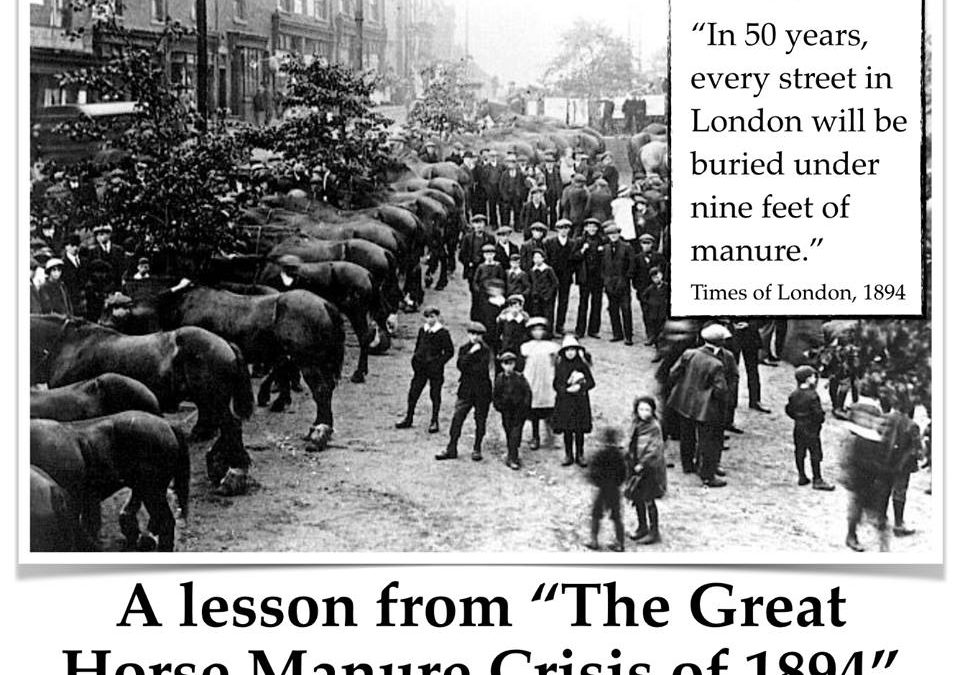
by Julia Felton | Aug 2, 2017
The thing I love about summer is the weather and the fact that all the plants and flowers bloom. It makes gardens look amazing and the good weather also means all the fields that I can see from my office window are green and verdant. Nature understands the seasons and that now is the time to start stocking up for winter. Animals start eating more so they have more body fat to keep them going through the winter. And my horses are no exception. The poor girls – Bracken and Thistle – only have to look at a blade of grass and they pile on the weight, whereas with the boys – Toby and Charlie – it is a slower process.
Regardless, the challenge is that as they eat more they also create more manure, which means I have more to clear out of their field each day. Currently I have to clear two barrowloads for manure every 24 hours. Given that the horses are currently living on a steep hill, and love to be at the bottom of the hill, my abs are getting a great workout each day, as I push these full barrows of manure up the hill.
So what does horse manure have to do with business?. Actually quite a lot it seems because the The Great Horse Manure Crisis of 1894 was the first big global urban crisis that the world’s largest cities faced in modern times.
By the late 1800’s London had over 50,000 horses moving cabs and buses every day. Each one produced 15 to 35 pounds of manure and 2 pints of urine daily. At the same time, New York had over 100,000 horses producing 2.5 million pounds of manure each day. No one could figure out how to handle all this manure, and in 1894 the Times newspaper predicted based on the increase in population and horses at the time “In 50 years, every street in London will be buried under nine feet of manure.”
The crisis led to the very first International Urban Planning Conference in New York. However, it was abandoned after three days – instead of the scheduled ten – because none of the delegates could see any solution.
Many of today’s challenges look similarly insurmountable. Anyone looking at current trends and trying to battle the inertia, outdated policies or plain bad decisions of many bureaucracies, corporations and governments can easily lose hope
So what happened to end the Great Horse Manure Crisis of 1894?
Within a matter of years, the entire crisis simply disappeared. While officials looked unsuccessfully for solutions, Karl Benz, Gottlieb Daimler and other inventors and entrepreneurs were creating the very first automobiles. They were looking outside the box at solutions that the urban planners could not even consider possible. After all who would have thought that cars would replace horses. That was such a preposterous idea.
Yet, by 1912, there were more cars than horses in London and New York, as it was cheaper to own a motor vehicle than a horse-drawn carriage and economics eventually ensured that horses were no longer central to the urban transport equation. In just over a decade the number of cars sold in the US rose from 4,192 per year in 1900 to 356,000 in 1912. By 1917, the last horse-drawn streetcar in New York had been retired. What was once thought to be an insurmountable threat to humanity’s existence vanished in little over a decade and the entire incident is now a barely remembered footnote in human history
“We can’t solve problems by using the same kind of thinking we used when we created them.” ~ Albert Einstein
Of course – the age of fuel-driven vehicles has created a whole new set of problems. But today, new inventors and entrepreneurs in green energy, health, education and all areas of society are coming up with new solutions at an increasingly rapid rate. In fact the biggest challenge for business today are the mavericks who are thinking outside the box and disrupting business. Just think Uber and Air BnB. Who would have thought that these two companies could completely change the face of the travel industry – and best of all they have done it without owning any assets!
There is no getting away from the fact the business is at a tipping point. The old structures are no longer serving us and as a business owner and leader you can either decide to focus at joining the groups protesting them or you can join the many who are already creating the new paradigms and be the change you want to see in the world.
What are you deciding? Will you become a conscious entrepreneur who challenges the status quo and stands for something more, or will you shrink and play small, staying stuck in the old ways of doing things. If the former, I’d love to hear from you as I specialise in helping leaders set out of their comfort zone to challenge the status quo and in doing so become a business pioneer.
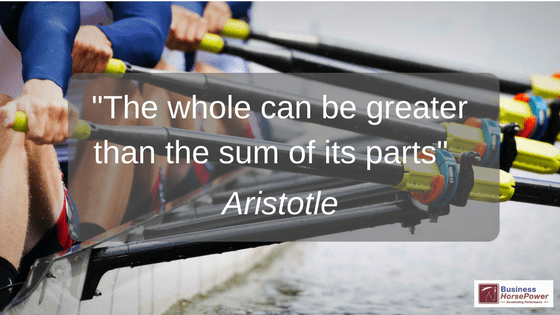
by Julia Felton | Jul 26, 2017
How come some teams are successful and others aren’t? I’m sure we’ve all been in teams that work well and other teams that don’t, and if you’re like me being in a dysfunctional team is super frustrating. So what are the traits of high performance teams and how do we ensure that any team we are part of adopts these traits.
Google was inspired to conduct some research to codify the secrets of team effectiveness and to examine why some teams excelled whilst others fell behind, and what they discovered surprised them. .
Before this study, like many other organisations, Google Execs believed that building the best teams meant compiling the best people. It makes sense. The best engineer plus an MBA, throw in a PhD, and there you have it. The perfect team, right? However, in the words of Julia Rozovsky, Google’s people analytics manager, “We were dead wrong.”
Eager to find the perfect mixture of skills, backgrounds, and traits to engineer super-teams, Google put together a team of statisticians, organisational psychologists, sociologists, engineers, and researchers to help solve the puzzle. Over a two year period they studied 180 Google teams, conduct 200-plus interviews, and analysed over 250 different team attributes. However, at the end they still had no clear pattern of characteristics that could be plugged into a dream-team generating algorithm.
This is because they initially failed to consider the behaviours of the group and how that impacted the collective intelligence of the team. It seems that the dynamic of how the team moves through the cycle of form – storm – norm – perform is pivotal to the ultimate success of the team.
I’m sure you’ve heard the quote by Aristotle, “The whole can be greater than the sum of its parts” and intuitively we all know that two heads are better than one but it is how these two heads collaborate and inter-act together that determines the success of the group. Great teamwork is not based on individual brilliance but rather on the dynamic and relationships that exist between the team members.
So here are the five traits of a high performing team that Google eventually identified:
- Dependability – Team members get things done on time and meet expectations.
- Structure and clarity – High-performing teams have clear goals, and have well-defined roles within the group.
- Meaning – The work has personal significance to each member.
- Impact – The group believes their work is purposeful and positively impacts the greater good.
- Psychological Safety – An environment where opinions are listened to and team members feel heard
I’m sure we’ve all been in meetings and, due to the fear of seeming incompetent, have held back questions or ideas. I know I have. It’s unnerving to feel like you’re in an environment where everything you do or say is under a microscope. But imagine a different setting, a situation in which every team member feels safe to take risks, voice their opinions, and ask judgment-free questions. A culture where managers provide air cover and create safe zones so team members can let down their guard. That’s psychological safety.
Reviewing these five traits we can see that team success is as much to do with the team dynamics and the business culture as with individual skill sets. In an age where teamwork is becoming increasingly important to respond to the uncertain world in which we live, the need to hire team members that are a good cultural and values fit is essential. Just imagine the impact of having someone in your team who is not aligned with the other team members. Not only do they feel uncomfortable but they also impact the harmony of the group, and in the worst situation can negatively impact the entire team. John Maxwell refers to this as the “law of the bad apple” and if not dealt with swiftly can cause silo mentality to develop within the team.
It is also interesting to note that the research highlighted that high performance teams feel like they are making an impact. In other words the team is purpose-driven. They exist to create an impact that this bigger then themselves and have some broader influence on the world. Increasingly, I am coming across more and more people who are more consciously aware of their impact and want to be part of something that is making a difference in the world. After all, in many ways we all want to make a contribution and be in service to others, as that just fulfils one of our basic human needs.
What contribution do you want to make and how does that impact how you show up in a team? If you’d like to explore what your purpose is and how you can make a real difference in the world, then let’s have a powerful conversation, as I know when I unlocked my purpose it made a massive difference to my own self-worth and business success.

by Julia Felton | Jul 19, 2017
How to have powerful conversations is a real challenge in business. And this cartoon that I came across on LinkedIn recently shows you exactly why. Both people are right and cannot understand why the other can’t see it. Can you relate to that?. Being certain that something is correct when your colleague is adamant that it isn’t.
I know I have been in this situation on more than one occasion. When this happens it is easy for the situation to escalate out of control with both parties believing that they are right, because after all they are. The only solution in these situations is to step into the other person’s shoes and to see things how they see them. Only then you will realise that they are also right and the confusion is coming from the fact that you are both seeing different things.
Now of course as readers and observers to this situation we can easily see the problem that these two people have, as we are in the position to see the challenge through yet another lens. Yes, that’s right there are always three positions of perspective to any situation. These are:
In this situation the man on the left hand side of the page is seeing the world through his lens and that means that the number is 6. If the man stepped across the page and stepped into the shoes of the man on the right hand side of the page, he would see that the number is 9. And finally if the man stepped away from the situation and looked back, he would clearly see, as we do, that both men are right but it is just how they are viewing the situation that is causing the confusion.
Armed with this information, the two men can now have a powerful conversation, in a calmer manner, as they can appreciate the different perspectives on what is happening. The man on the left is able to appreciate the folly of his insight and so make a much better decision.
These three positions of perspective can be used anytime you have to have a difficult conversation with someone, or if you have to make a difficult decision. What I love to do is to put three peices of paper on the floor. Then one by one I stand on each peice of paper and reflect on how I am feeling in that space. How does the situation change when I view it from a different perspective. It is amazing what insight you can get into other people’s intentions and feelings when you do this.
I remember the first time I used this model was when I was deciding what to do about my racehorse Charlie. My three month loan period was fast approaching and I had to make a decision about whether I wanted to buy him. Although I wanted to, I knew he also had some underlying lameness problems which we hadn’t got to the bottom of, and given I already had one lame horse I didn’t want another one. So from my perspective the only option was give him back. However, when I stepped into the position of Other I realised that the owner was happy not to have the responsibility and upkeep for Charlie, so they didn’t really want him back. Finally, when I looked at the situation through the lens of the observer I realised another solution existed and that the owner might just consider extending the loan for another 3-6 months. Armed with all these different insights I was now able to make a much more informed decision about how to proceed.
And as many of you know, Charlie stayed with me and eventually, some six months later I brought him for £1. That was something I could have never imagined would be possible initially.
So what opportunities are available to you right now, if you could just look at them from another perspective? There are probably a lot more than you ever imagined.
The Art of Authentic Communication
If you enjoyed this post then I know you will enjoy the Art of Authentic Communication workshop I am running this Friday 21st July, along with the horses. There are still a few places left if you want to come along. During this experiential workshop will learn how to:
- Use the three diferent dimensions of communication
- Engage in listening and communicating more effectively
- Mediate discussions amongst team members
- Gain an insight into different personality types and their preferred method of communication
- Become more assertive
- Use your body language as a tool for communication
- The importance of non-verbal communication
- Influence team members and inspire them to follow you.
To book in simply click here. I can’t wait to share all this great information with you, as I know that mastering the art of authentic communication can seriously improve your life and business.

by Julia Felton | Jul 12, 2017
Are you ready to break free?
Today I wanted to share the words of Natasha Bedingfield’s song called Wild Horses.
These words really resonate with me right now and I know that often many of my clients feel trapped in their lives and wish they could be free.
The great news is that we all the have ability to Grab The Reins and Lead Our Life, so if you are feeling stuck right now register for one of limited number of complimentary discovery sessions I offer each month.
During our call you will:
- Uncover hidden opportunities to create more income in your business
- Discover how you may be unconsciously sabotaging your business and its success and break through those limitations
- Create a clear plan that describes in detail the steps you need to unleash the hidden potential in your business
- The one simple step you can take immediately to get into action
Click the link here to register for one of the limited number of complimentary discovery sessions.
Ooooh I feel these four walls closing in
Face up against the glass
I’m looking out, hmmm
Is this my life I’m wondering
It happened so fast
How do I turn this thing around
Is this the bed I chose to make
It’s greener pastures I’m thinking about
Hmm, wide open spaces far away
All I want is the wind in my hair
To face the fear but not feel scared
Ooh, wild horses I want to be like you
Throwing caution to the wind,
I’ll run free too
Wish I could recklessly love like I’m longing to
I want to run with the wild horses
Run with the wild horses, oh Yeah, oh oh, ye-yeah
I see the girl I want to be
Riding bare-back, care-free
Along the shore
If only that someone was me
Jumping head-first, head-long
Without a thought
To act and down the consequence
How I wish it could be that easy
But fear surrounds me like a fence
I want to break free
All I want is the wind in my hair
To face the fear, but not feel scared
Oooh, wild horses I want to be like you
Throwing caution to the wind, I’ll run free too
Wish I could recklessly love like I’m longing to
I want to run with the wild horses
Run with the wild horses, oh
I want to run too
Oooh oh oh oh
Recklessly emboundening myself before you
I want to open up my hear
Tell him how I feel, ooh ooh
Oooh, wild horses I want to be like you
Throwing caution to the wind, I’ll run free too
Wish I could recklessly love like I’m longing to
I want to run with the wild horses
Run with the wild horses
Run with the wild horses
Ooh ooooh ooh ooh ye-yeah yeah oohh
I want to run with the wild horses, ooooh
Did you enjoy that?. Did you resonate with the words and are you ready to break free and grab the reins? If you are then please connect with me and let’s have a conversation about how I can help you.

